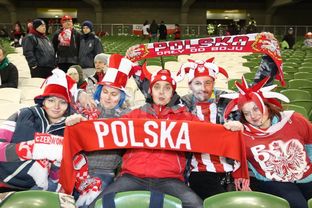
Tonight's friendly international schedule is upon us. I was not surprised to hear earlier in the week Robin Van Persie, Steven Gerrard and others had pick up ‘knocks’ playing at club level, ruling them out of this evening's games. It’s hard to disagree with clubs, who sometimes secretly encourage this behaviour, as they attempt to ‘protect’ their players during the hectic domestic season, with many club managers often calling into question the merit of friendly internationals.
While most associations will argue that friendly games are an opportunity for national managers to get their squad together to work on shape, tactics, etc. the mid-November games are also a revenue generation exercise.
The catch of course is that ‘friendlies’ are often like watching paint dry.
Getting 50,000 plus people into the Aviva in mid-November isn’t easy. The Football Association of Ireland appear to be following a sensible approach. If people aren’t drawn to watch the home team, try to target people that wish to watch the away team.
EU27 residents (excluding Ireland the UK) now make up the 2nd largest ‘nationality’ group in the country according to the CSO’s 2011 census. More than 6% of the population fall under this category. The bulk of these are from Eastern Europe. The FAI appear to be targeting this market.
From September 1990 to August 2006, Ireland played 42 home friendlies. 10 games (24%) were against Eastern European teams during this sixteen year period. Since then, the Boys in Green have played 16 home friendlies. 7 have been played against teams from Eastern Europe (44%). The next two home friendly are against Latvia and Serbia. That means by next March, 50% of all home friendly since 2008 will have been versus teams from Eastern Europe.
Poland, the Czech Rep and Serbia will all have visited twice in the past decade for friendly games by next March. The Poles in particular brought a huge ‘travelling’ support.
But beware, since 2009 net migration from the EU27 (excluding the UK) has fallen year on year. While the likes of Latvia and Croatia may still be value for money, our days of watching Eastern Europe opposition in the Aviva may be drawing to a close.
 RSS Feed
RSS Feed